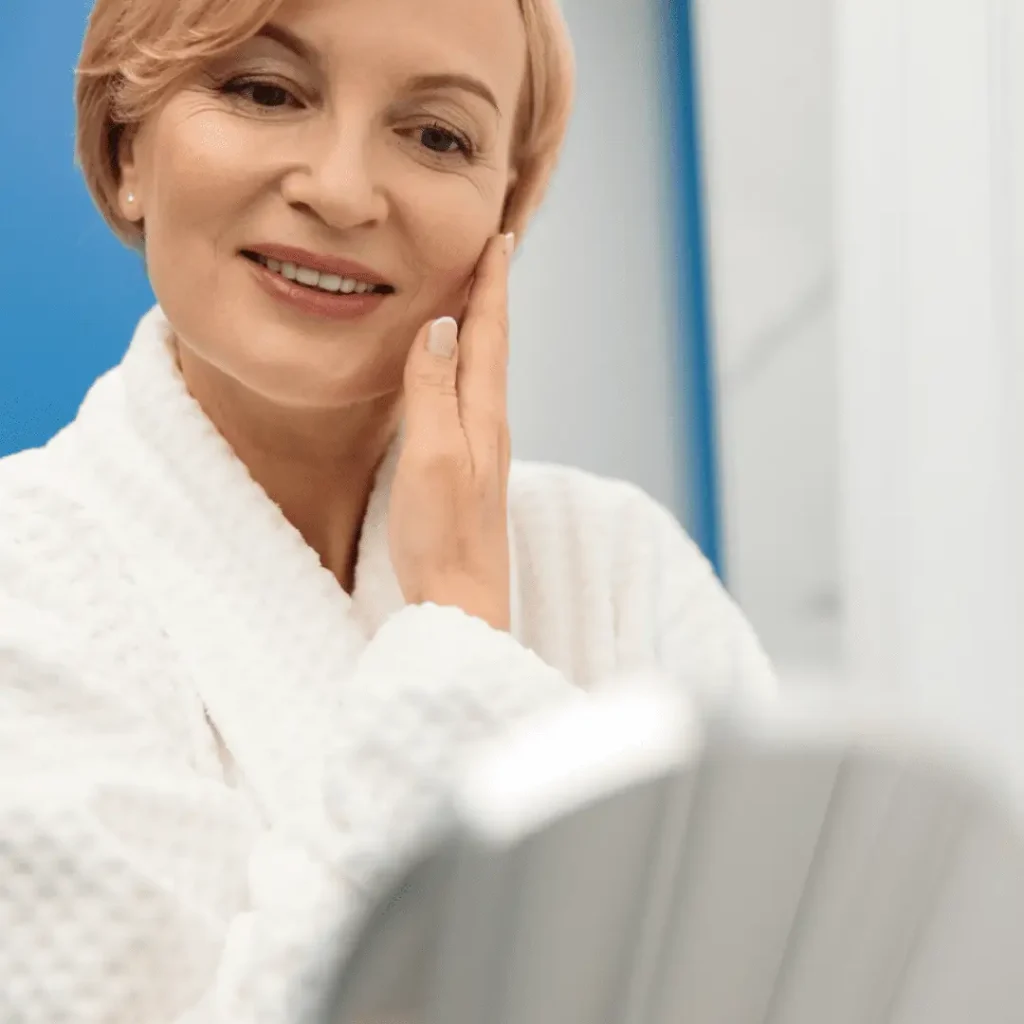Mojia BOOST .3 and PRO Lift microcurrent devices.
Thank you for reading this post, don't forget to subscribe!Microcurrent technology.
Microcurrent devices can address various issues, such as lifting and toning, reducing wrinkles and fine lines, improving skin tone, and enhancing overall skin texture. Understanding your specific needs will help you choose a device that targets your concerns effectively.
Utilising low-level electrical currents that imitate natural electrical currents in the body, microcurrent devices work on a cellular level by stimulating facial muscles and promoting collagen and elastin production. This non-invasive and painless process is an appealing option for those who desire a more youthful appearance without resorting to surgical procedures.
In what ways does the BOOST .3 microcurrent at a frequency of 0.3 Hz differ from the PRO Lift operating at 10 Hz?
The BOOST .3 microcurrent device operates at a frequency of 0.3Hz, which means it delivers electrical current to the skin 0.3 times per second. On the other hand, the PRO Lift microcurrent device operates at a frequency of 10Hz, delivering current 10 times per second.
The difference in frequency can have an impact on the effectiveness and results of the microcurrent treatment. A higher frequency like 10Hz may provide quicker and more noticeable results. This can help stimulate the muscles and promote a more immediate firming and lifting effect.
Benefits of BOOST .3
The advantages of enhancing skin tone and texture are numerous with the utilisation of the Boost .3 device, which operates at a frequency of 0.3Hz. The notable characteristic of this low frequency is its healing properties and its ability to promote the production of collagen. Collagen, a crucial protein that gives structure and support to the skin, is stimulated to increase its production, resulting in skin that appears visibly smoother and firmer.
BOOST .3 and ATP (Adenosine triphosphate)
Adenosine triphosphate (ATP), a molecule that serves as the primary energy source in cells, is generated through various metabolic pathways, primarily within mitochondria. In the context of the skin, ATP is instrumental in maintaining its health and functionality. Here are a few key ways in which ATP is involved in the skin:
1. Energy production: ATP serves as an energy source for a range of cellular processes within the skin, including cell division, repair, and the synthesis of proteins, lipids, and other molecules. It powers the metabolic reactions necessary for the production of collagen, elastin, and other structural components that uphold the skin’s firmness, elasticity, and youthful appearance.
2. Epidermal barrier function: The outermost layer of the skin, known as the epidermis, acts as a protective barrier against external threats such as pathogens, chemicals, and UV radiation. ATP facilitates the process of cell turnover and maintains the integrity of the epidermal barrier by supporting the production and turnover of skin cells.
3. Wound healing: ATP plays a critical role in the wound healing process. When the skin sustains an injury, ATP is released from damaged cells and acts as a signalling molecule, initiating the repair process. It attracts immune cells to the site of the injury, stimulates cell division and migration, and promotes the synthesis of new collagen and extracellular matrix, ultimately resulting in scar formation.
4. Skin aging: As we age, the production of ATP in the skin diminishes. This decline in ATP levels contributes to various signs of skin aging, including reduced cell turnover, slower wound healing, decreased collagen production, and a weakened epidermal barrier. Hence, maintaining adequate ATP levels in the skin is crucial for preserving its youthful appearance and optimal functionality.
Overall, ATP is indispensable for the proper functioning of skin cells and plays a pivotal role in maintaining skin health, preserving the integrity of the epidermal barrier, facilitating wound healing, and mitigating the effects of skin aging.
Benefits of PRO LiFT
On the other hand, a microcurrent facial device such as PRO Lift at 10Hz operates at a higher frequency and delivers electrical pulses at a rate of 10 cycles per second. This higher frequency setting may provide more intense muscle stimulation. It may be beneficial for individuals seeking muscle toning and lifting effects.
The main emphasis of the PRO Lift is to stimulate the muscles, offering a more holistic approach to rejuvenating the skin. By utilising microcurrents at a higher frequency, the PRO Lift effectively penetrates the layers of the skin, specifically targeting the underlying muscles. The facial muscles receive a gentle stimulation which triggers the production of ATP within the muscle cells. ATP, synthesised within the mitochondria, acts as the cell’s powerhouse.
Through the gentle stimulation of these muscles, the PRO Lift improves their tone, resulting in visibly lifted and sculpted youthful-looking skin.
Pro LiFT and ATP (Adenosine triphosphate)
ATP (adenosine triphosphate) is important in facial muscles because it provides the necessary energy for muscle contraction and relaxation. When a muscle contracts, ATP is hydrolysed to release energy, which powers the muscle fibres to shorten and generate force. This contraction allows the facial muscles to perform various movements involved in facial expressions, such as smiling, frowning, and raising eyebrows.
ATP also plays a crucial role in the maintenance of muscle tone in the face. Even at rest, the facial muscles are slightly contracted to keep the face in its natural form. This constant low-level contraction requires a continuous supply of ATP to sustain the muscle tone.
Instant gratification, cumulative, and long term effects
Both BOOST .3 and PRO Lift, when used regularly, exhibit cumulative effects on the skin.
Continuous use of the BOOST .3 increases the production of collagen and elastin, resulting in long-term improvements in skin elasticity and firmness. Additionally, the enhanced blood circulation and lymphatic drainage contribute to a healthier complexion, reducing puffiness and promoting a natural glow.
While the PRO Lift microcurrent device can deliver immediate gratification by promoting a more lifted appearance, making it an ideal choice for a rejuvenated look at the start of the day, or before an evening event, its long-term effects accumulate over time.
In summary
To summarise, both BOOST .3 and PRO Lift use electrical currents for facial rejuvenation, aid in the absorption of skincare products by opening up the skin’s pores, aid in lymphatic drainage, and improve circulation.
However, they differ in terms of intensity and their impact on the skin. While PRO Lift primarily focuses on muscle stimulation for a toned and lifted result, BOOST .3 primarily operates at a cellular level that resonates with cells, optimising skin health and vitality. Incorporating both BOOST .3 and PRO Lift into your skincare routine allows for the full potential of these innovative technologies to be unlocked, resulting in a truly transformative facial experience.

